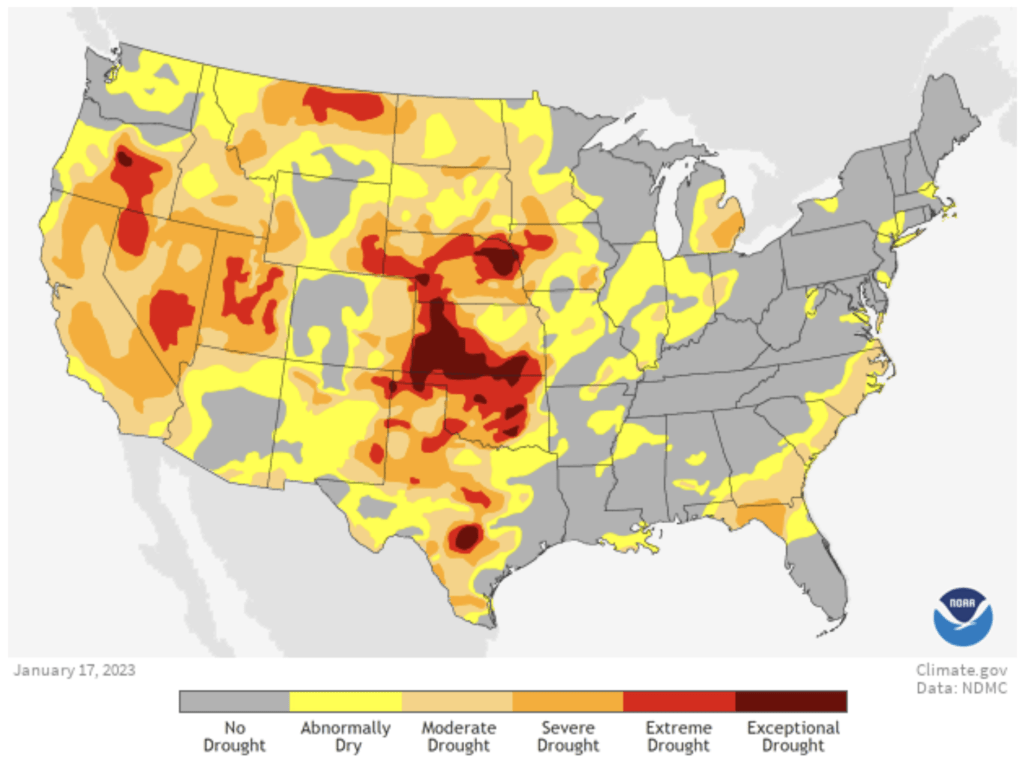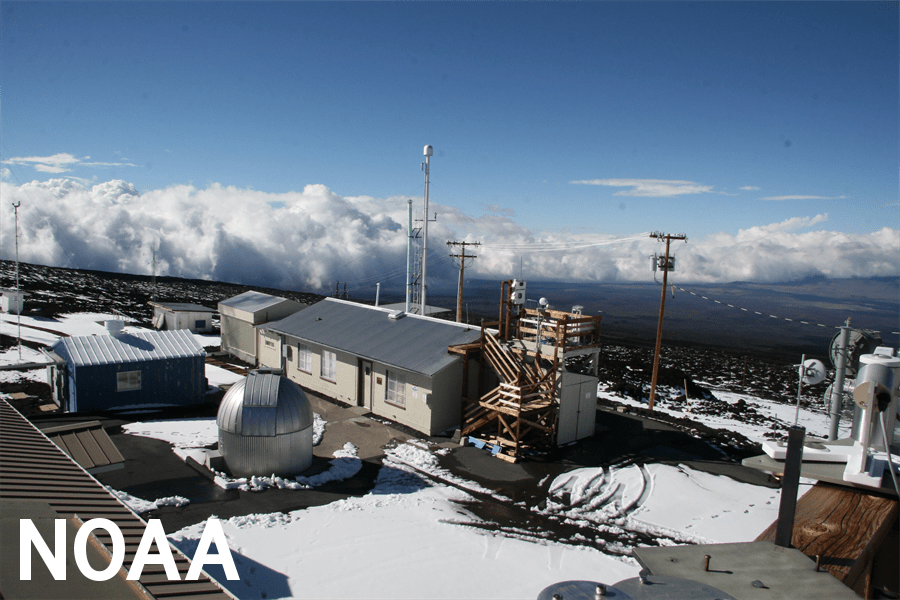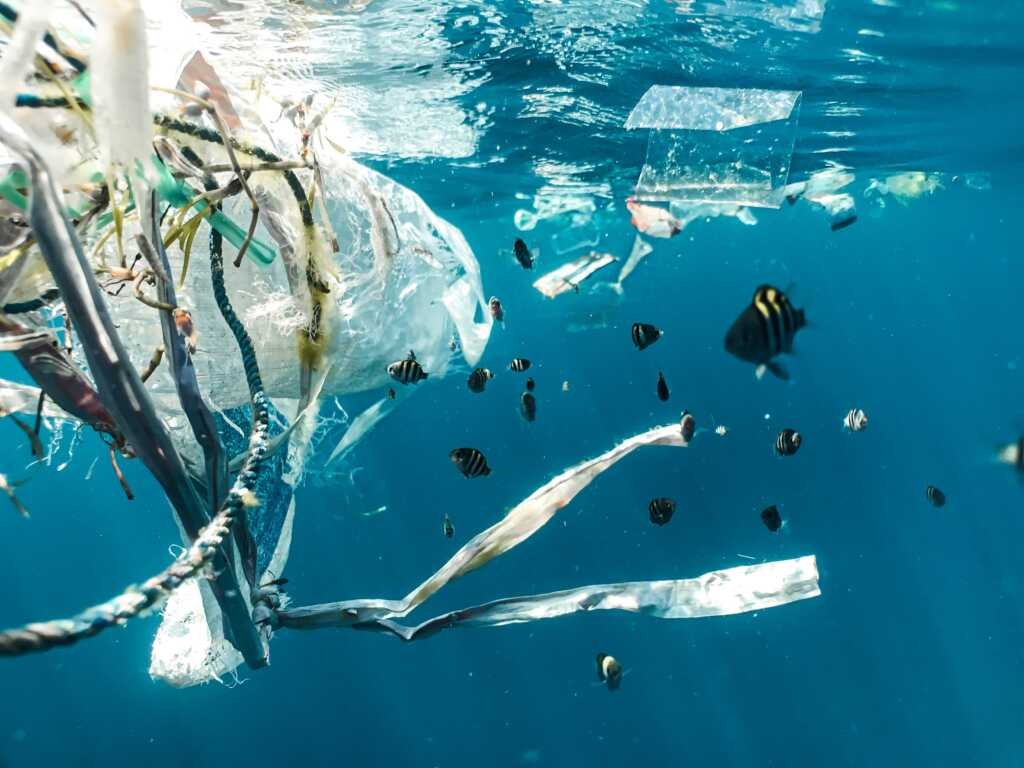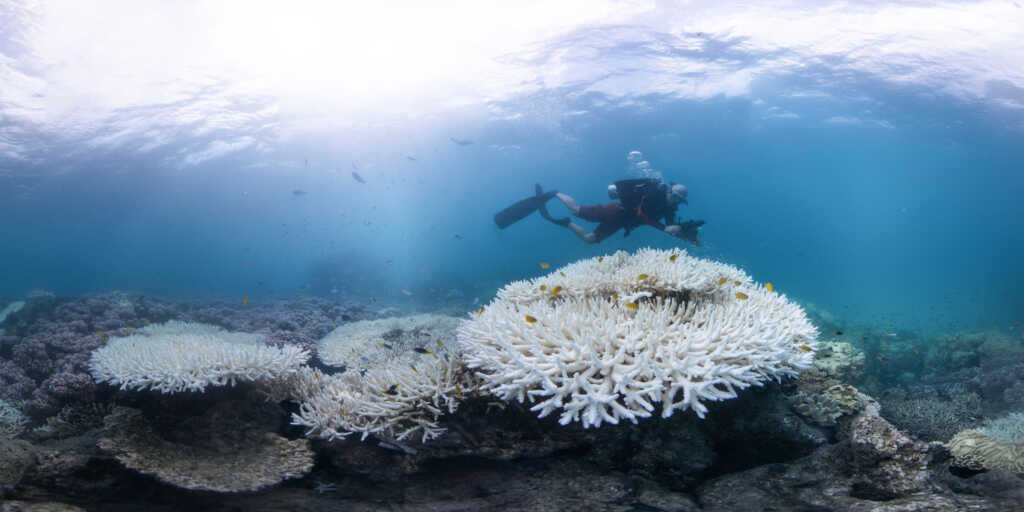For optimal viewing experience, it is recommended to access this page on a computer or large tablet.
BELLRINGERS
ESS3: Earth and Human Activity
MS ESS3-3
Monitoring and Minimizing Human Impact on the Environment
- Why is it important to monitor the amount of water in an environment?
- Why is it important to monitor carbon dioxide and other gases in the atmosphere?
- How does garbage get in the ocean? How does the garbage affect life in the ocean?
- Why is it important to monitor the temperature and pH of the ocean?

This map shows the areas in the United States that are experiencing droughts.
Why is it important to monitor the amount of water in an environment?
Common Misconceptions
These misconceptions were identified by AI ChatGPT.
Drought: Drought is often thought of as a lack of precipitation, but it can also be caused by human activities such as over-extraction of groundwater, and changes in land use and land cover.
Water is a unlimited resource: Water is a finite resource and there is a limit to how much we can extract and use. Climate change and population growth are causing an increasing demand for water.

People use technology to monitor the levels of carbon dioxide in the atmosphere at Mauna Loa Observatory in Hawaii.
Why is it important to measure carbon dioxide and other gases Earth’s atmosphere?
Common Misconceptions
These misconceptions were identified by AI ChatGPT.
Composition of the atmosphere: Many people believe that the atmosphere is primarily made up of oxygen, when in reality, it is mostly composed of nitrogen (78%) with only about 21% oxygen.
Greenhouse gases: Many people believe that carbon dioxide is the only greenhouse gas, but other gases such as methane, nitrous oxide and fluorinated gases also contribute to the greenhouse effect.
Natural vs human-caused emissions: Some people believe that the current levels of greenhouse gases in the atmosphere are solely the result of natural processes, when in fact human activities such as burning fossil fuels and deforestation have greatly contributed to the increase in these gases.

How do you think garbage ends up in the ocean?
How do you think the garbage affects life in the ocean?
Common Misconceptions
Marine debris only affects sea creatures: Marine debris not only affects marine animals but also can be harmful for human health and economies through the ingestion of seafood containing microplastics, tourism industry and coastal communities that depend on fishing and aquaculture.
Ocean garbage only stays in the ocean: Marine debris can also be transported by ocean currents, winds and tides to other parts of the world, including remote areas and coastal communities, where it can cause damage to habitats, wildlife and human infrastructure.
Garbage is only dumped directly into the ocean: Many people believe that garbage only gets into the ocean through direct dumping, but a significant amount of it also enters through stormwater runoff, sewage outflows, and rivers that carry litter from land to sea.
Additional Resources

Coral bleaching occurs when algae leaves the coral as a result of higher temperatures and decreased pH of the ocean water.
The coral often do not survive coral bleaching events.
Why is it essential to monitor the pH and temperature of the ocean?
Common Misconceptions
Coral reefs are plants: Coral reefs are actually made up of tiny, soft-bodied animals called coral polyps.
Coral reefs are only found in tropical waters: Coral reefs can be found in a variety of environments, including tropical, subtropical, and even some temperate waters.
Coral reefs are insignificant: Coral reefs are incredibly diverse and important ecosystems that support a wide variety of marine life. They also provide important economic and environmental services, such as coastal protection and tourism.
Coral reefs are not affected by human activities: Coral reefs are threatened by a variety of human activities, including pollution, overfishing, and climate change.
